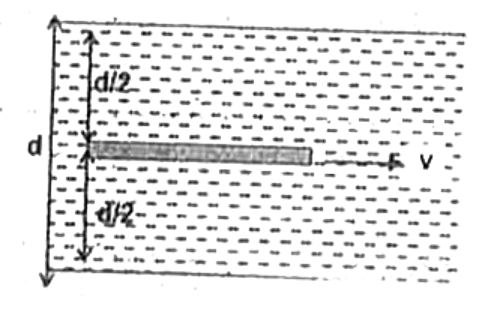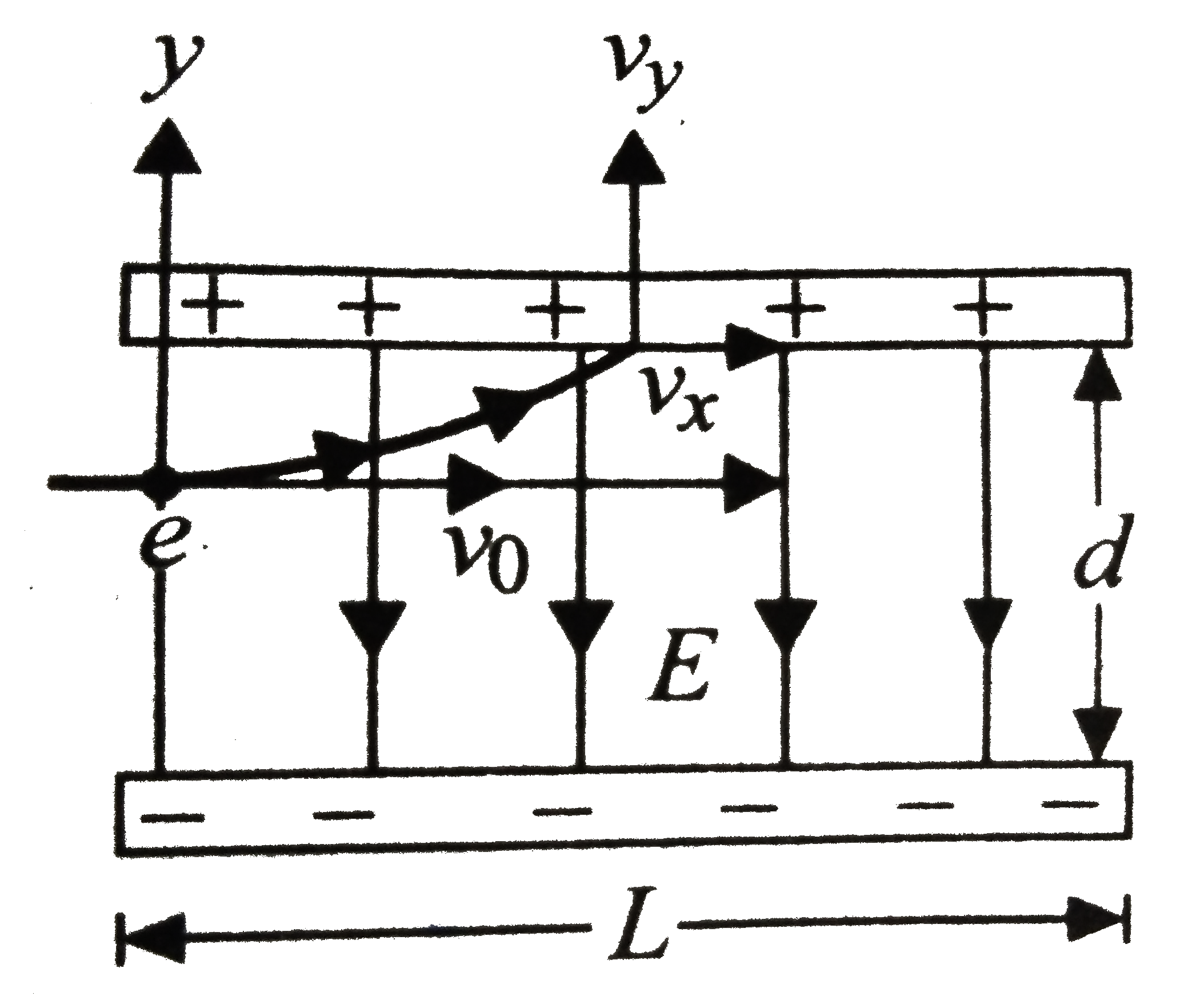A square plate 0.1 m side moves parrarel to second plate with a velocity of 0.1ms−1 ,both plate being immersed in water .If the viscous force is 0.002 N and the cofficient of viscosity 0.001 poise, distance between the plate is
0.1 m
0.05 m
0.005 m
0.0005 m
The correct Answer is:D
To find the distance between the two plates, we can use the formula for viscous force in a fluid, which is given by:
F=η⋅A⋅dvdx
Where:
- F is the viscous force,
- η is the coefficient of viscosity,
- A is the area of the plate,
- dvdx is the velocity gradient (change in velocity with respect to distance).
1. Identify the given values:
- Side of the square plate, L=0.1m
- Velocity of the plate, v=0.1m/s
- Viscous force, F=0.002N
- Coefficient of viscosity, η=0.001poise=0.001N s/m2 (since 1poise=0.1N s/m2)
2. Calculate the area of the plate:
A=L2=(0.1m)2=0.01m2
3. Rearrange the formula to solve for dx:
F=η⋅A⋅dvdx⟹dvdx=Fη⋅A
Therefore,
dx=η⋅A⋅vF
4. Substitute the values into the equation:
dx=0.001N s/m2⋅0.01m2⋅0.1m/s0.002N
5. Calculate dx:
dx=0.000001N m/s0.002N=0.0005m
6. Convert to a more readable unit:
dx=0.0005m=0.5mm
Final Answer:
The distance between the plates is 0.0005m or 0.5mm.
- F is the viscous force,
- η is the coefficient of viscosity,
- A is the area of the plate,
- dvdx is the velocity gradient (change in velocity with respect to distance).
- Side of the square plate, L=0.1m
- Velocity of the plate, v=0.1m/s
- Viscous force, F=0.002N
- Coefficient of viscosity, η=0.001poise=0.001N s/m2 (since 1poise=0.1N s/m2)
2. Calculate the area of the plate:
A=L2=(0.1m)2=0.01m2
F=η⋅A⋅dvdx⟹dvdx=Fη⋅A
Therefore,
dx=η⋅A⋅vF
dx=0.001N s/m2⋅0.01m2⋅0.1m/s0.002N
dx=0.000001N m/s0.002N=0.0005m
dx=0.0005m=0.5mm
The distance between the plates is 0.0005m or 0.5mm.
Topper's Solved these Questions
- BOOK - NCERT FINGERTPS ENGLISHCHAPTER - MECHANICAL PROPERTIES OF FLUIDSEXERCISE - Higher Order Thinking Skills8videos
MECHANICAL PROPERTIES OF FLUIDS
- BOOK - NCERT FINGERTPS ENGLISHCHAPTER - MECHANICAL PROPERTIES OF FLUIDSEXERCISE - Exemplar Problems5videos
MECHANICAL PROPERTIES OF FLUIDS
- BOOK - NCERT FINGERTPS ENGLISHCHAPTER - LAWS OF MOTIONEXERCISE - Assertion And Reason15videos
LAWS OF MOTION
- BOOK - NCERT FINGERTPS ENGLISHCHAPTER - MECHANICAL PROPERTIES OF SOLIDSEXERCISE - Assertion And Reason15videos
MECHANICAL PROPERTIES OF SOLIDS
Similar Questions
A square plate of 0.1 m side moves parallel to another plate with a velocity of 0.1ms−1 both plates immersed in water. If the viscous force is 0.02 N and the coefficient of viscosity 0.01 poise, what is the distance apart?
View SolutionA square plate of 1m side moves parallel to a second plate with velocity 4m/s. A thin layer of water exist between plates. If the viscous force is 2N and the coefficient of viscosity is 0.01 poise then find the distance between the plates in mm.
View SolutionTwo square metal plates, each of side 10 cm are immersed in water. One plate moves parallel to the other with a velocity of 5 cm s−1. If the viscous force is 150 dyne, what is their distance of separation ? Given ηwater = .001 PI
View SolutionTwo glass plates each of length 16 cm and breadth 8 cm move parallel to each other in water with a relative velocity of 6 cm s−1. If the viscous force is 175×10−5N, what is their distance of separation ? (Given ηwater = 0.001 PI)
View SolutionBetween a plate of area 100cm2 and another plate of area 100m2 there is a 1mm, thick layer of water, if the coefficient of viscosity of water is 0.01 poise, then the force required to move the smaller plate with a velocity 10cms−1 with reference to large plate is
View SolutionA thin square plate of side φ=10cm is dragged with constant velocity v=3 cm/s in an oil . The width 'd' of the oil column is 2mm. Square plate is placed symmetrically as shown in the figure. Assumed velocity of layer of oil at the end is negligible. The coefficient of viscosity is 150 poise. Find the horizontal force (in Newton) required to move the square plate with constant velocity
 View Solution
View SolutionA drop of water of 0.2 g mass is placed between two well cleaned glass plates, the distance between which is 0.01 cm. Find the force of attraction between the plates,
View SolutionA parallel plate capacitor is constructed with plates of area 0.0280m2 and separation 0.550mm. Find the magnitude of the charge on each plate of this capacitor when the potential between the plates is 20.1V
 View Solution
View SolutionA particle of mass 9×10−31 kg having a negative charge of 1.6×10−19C is projected horizontally with a velocity of 106ms−1 into a region between two infinite horizontal parallel plates of metal. The distance between the plates is d=0.3cm and the particle enters 0.1cm below the top plate, THe top and bottom plates are connected, respectively to the positive and negative terminal of a 30V battery. Find the components of hte velocity of hte paricle just before it hits one of the plates.
 View Solution
View SolutionA parallel plate capacitor has capacitance of 1.0F. If the plates are 1.0mm apart, what is the area of the plates?
View Solution

